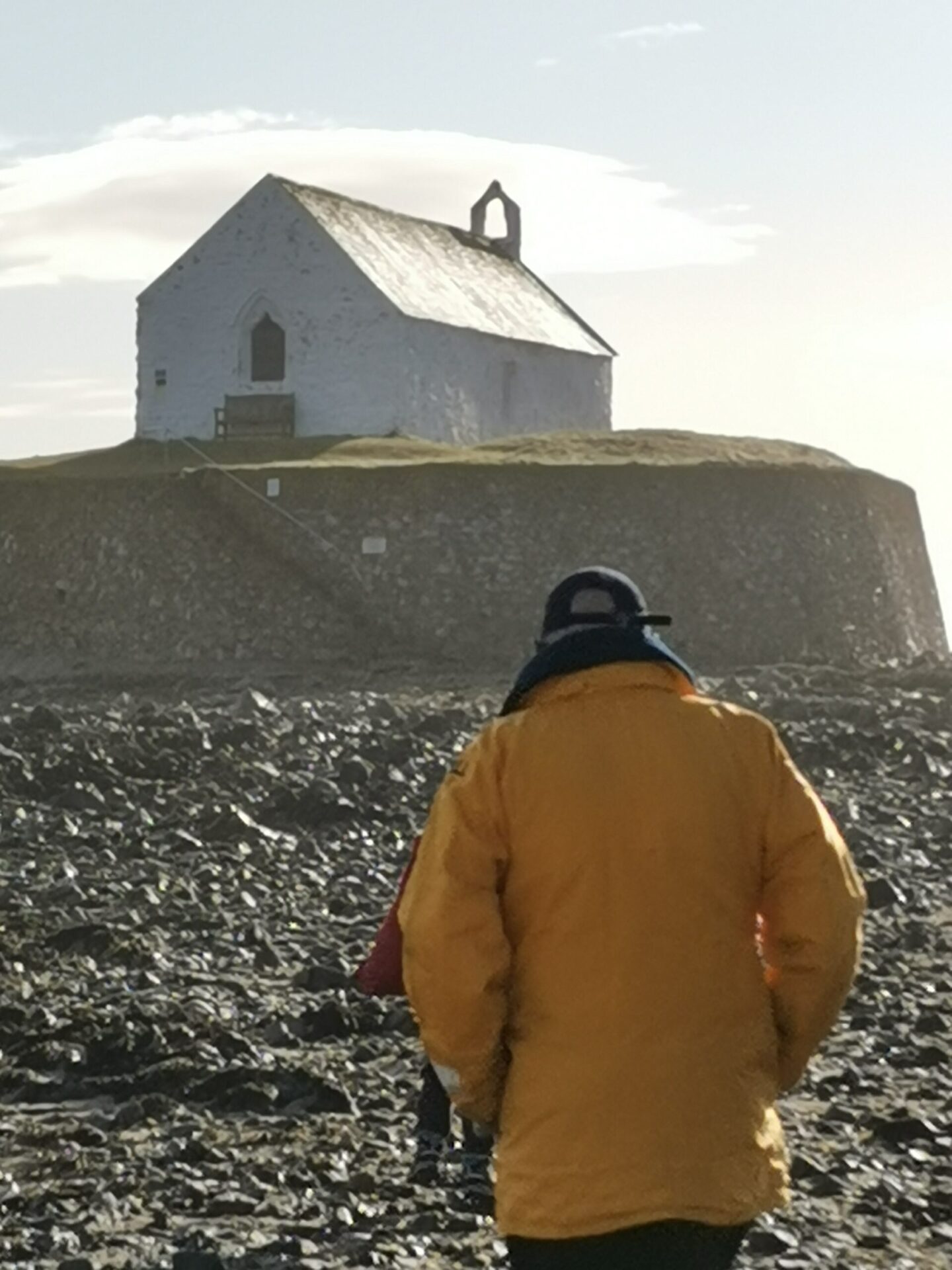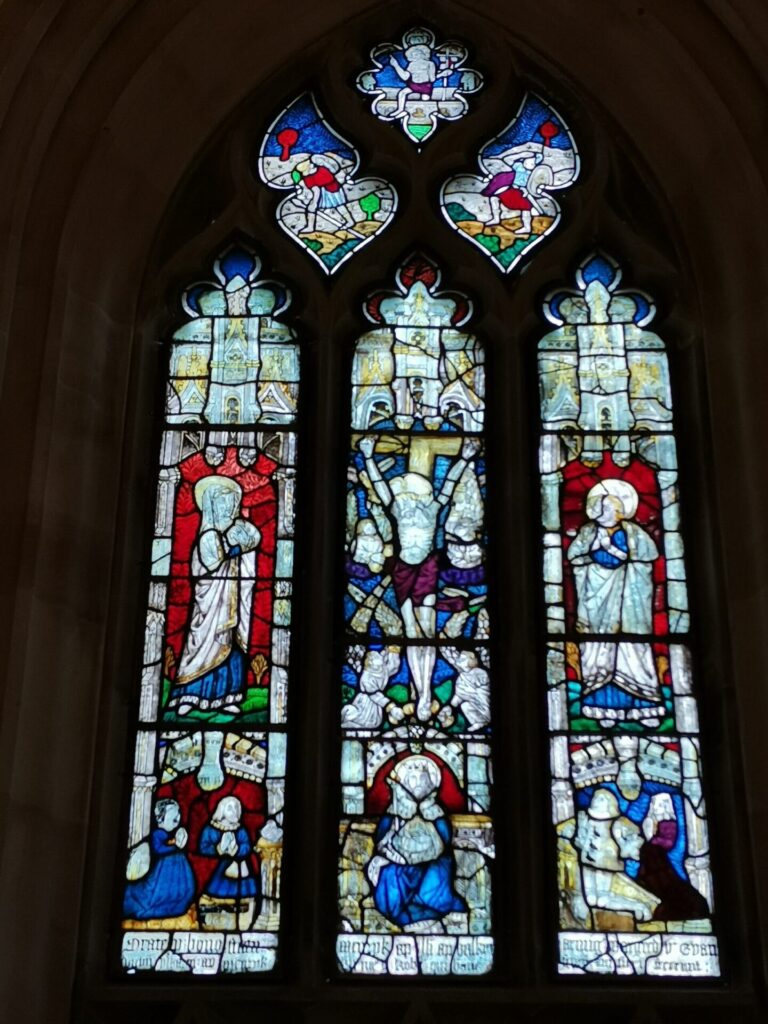
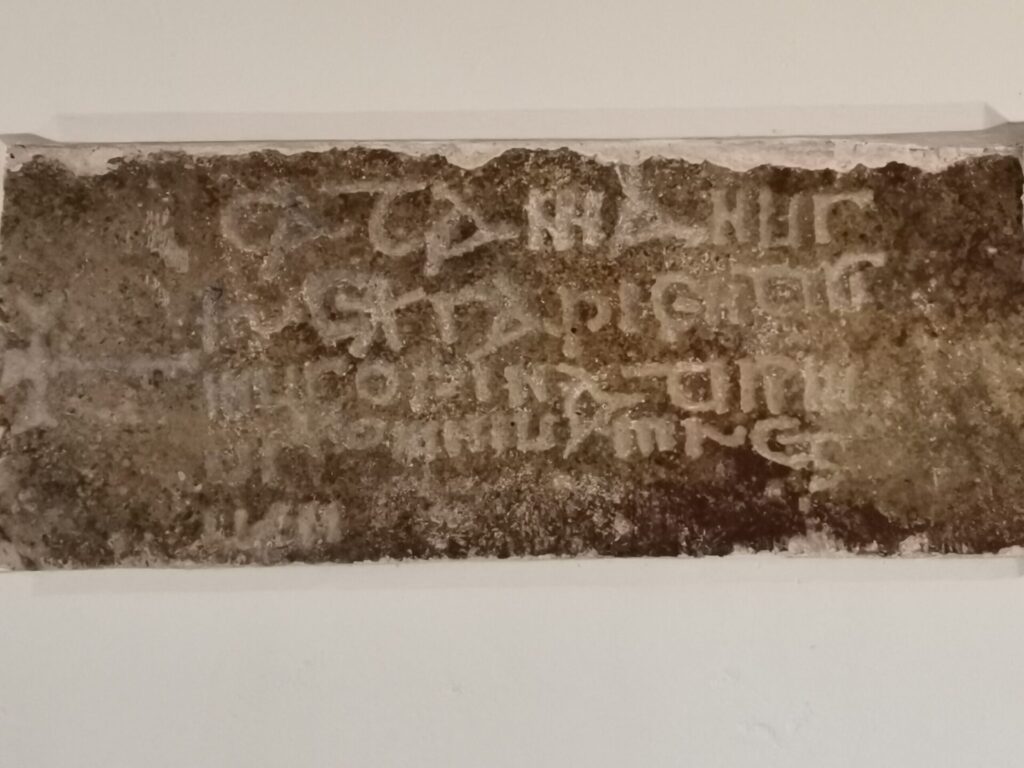
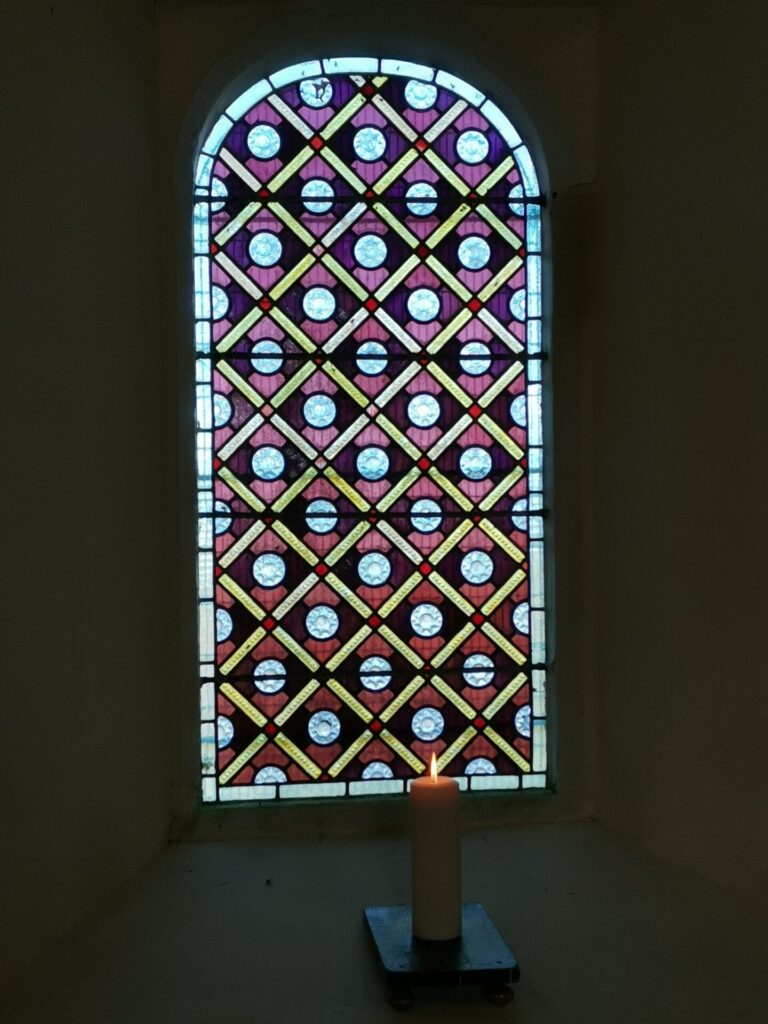
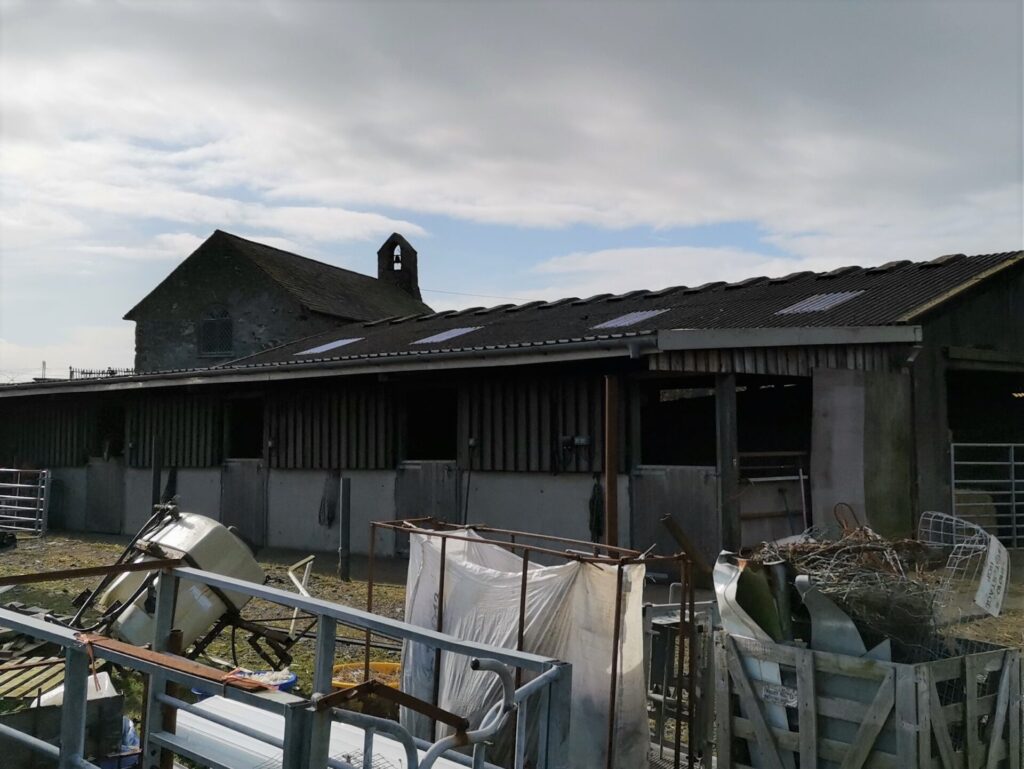

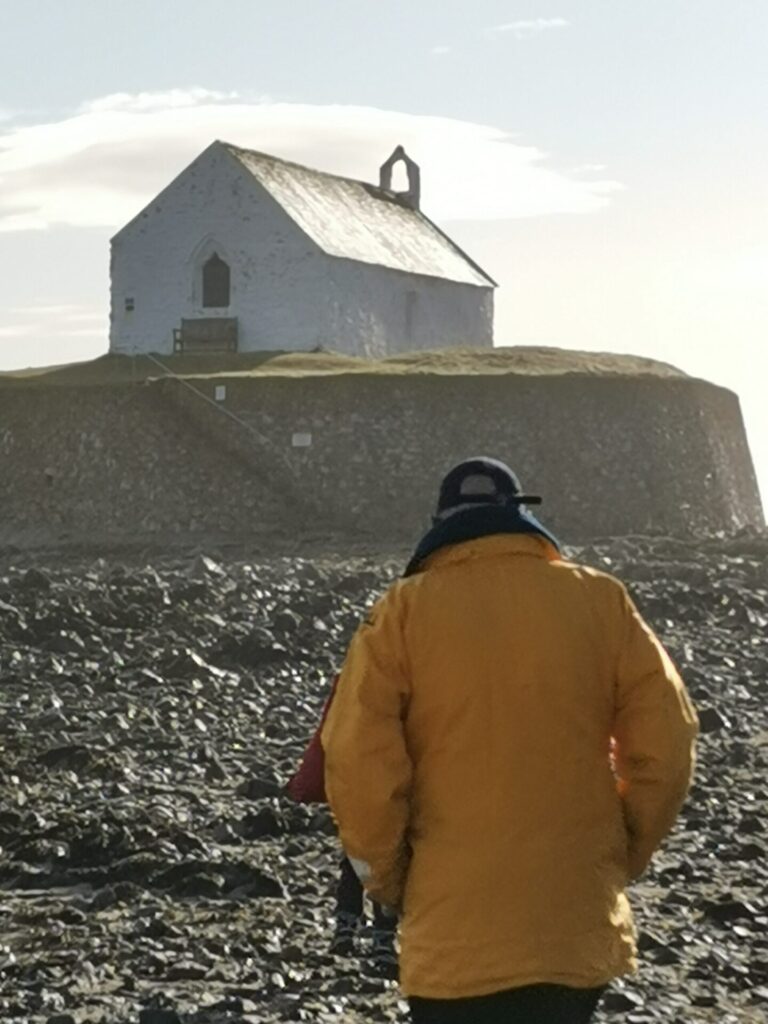
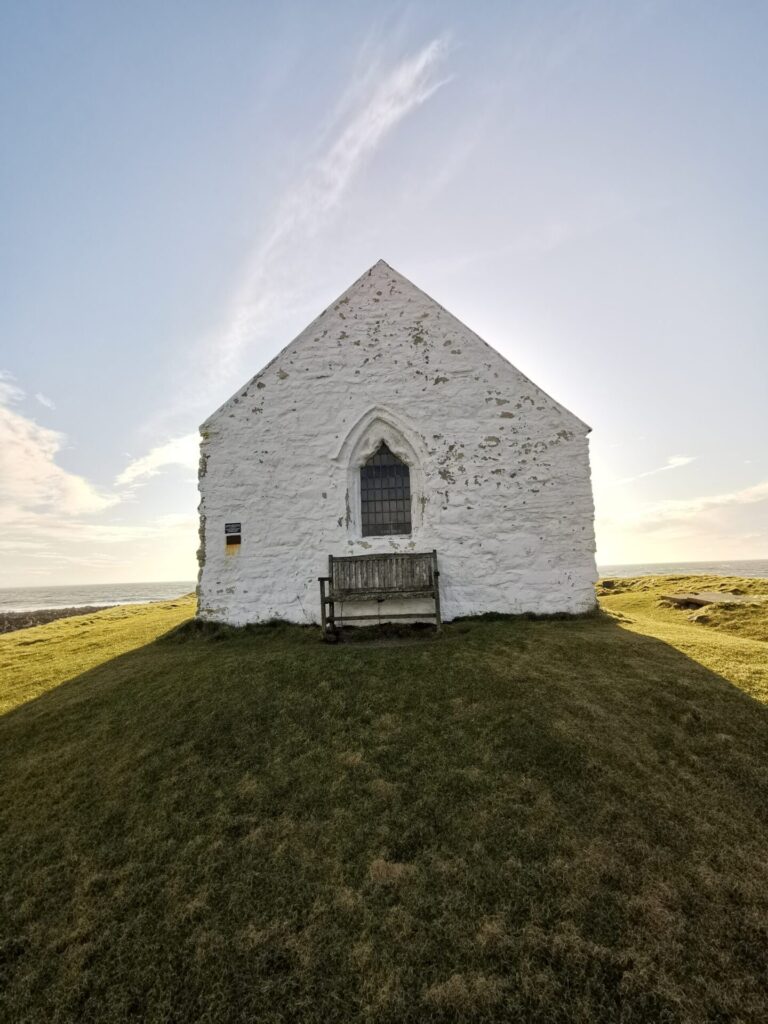
A serendipitous virtual meeting in the otherworld of cyberspace, led to a great day out recently, despite there not being a bicycle in sight! We at Green Lane Bike Tours have been commissioned to lead some exclusive tours for Explore Churches.
Explore Churches encourages people to visit churches, chapels and sacred spaces and places. Their website is a fascinating resource, or just a great place to nose around, for finding out about architectural churches, wildlife filled churches, city churches and so on… By encouraging planned visits to these spaces, the project contributes to their sustainability.
We love exploring and investigating Anglesey’s history, and I’ve mused in an earlier blog that I suspect that we overlook and take all the standing stones, burial chambers and cromlechs in the landscape all over Anglesey, for granted, without considering their significance. Other features we probably overlook are the myriad chapels and churches on Anglesey. Adapting our routes to include church visits and elements of a new growth sector- that of ‘sacred tourism’, wasn’t a problem. A few routes were suggested, though, on reflection, I realized that all our routes would fit the bill!
Cadfan stone
After numerous e mails and phone calls, I was delighted to meet Caroline from Explore Churches and show her exactly what she’d commissioned! Our first stop was Llangadwaladr, and it was just as well that we began our epic seven-church visit a little late, as some of the congregation were still chatting at the church door after the morning service. Llangadwaladr, like most Anglesey churches, is a mongrel when it comes to the architecture, having been re-built and remodelled over the centuries. We started with the 19th century stone gargoyles on the outside of the building. Perhaps they were supposed to arouse fear, but the best ones are the Welsh dragon and a ‘monster’, who looks more like Dobie, Harry Potter’s house-elf! Step inside though, and there are some real treasures. A 7th century stone commemorating Cadfan, an early king of Gwynedd. If you could decipher the early and flowery script of his Latin epitaph, you’d see him described as: ‘the wisest, most illustrious of all kings’.
Read an article by Prof Nancy Edwards of Bangor University, whose business is early inscribed stones here: https://www.walesonline.co.uk/lifestyle/nostalgia/welsh-history-month-memorial-stone-3812462 There’s a lot more to marvel at in this church, including the largest medieval stained glass window still in place in Anglesey.
Islamic stained glass
We then slipped in to visit St Mary’s Bodewryd, near Rhosgoch, sadly soon to be closed, but about to host a christening. This tiny church is not Anglesey’s smallest, but I find that there are so many small churches, that without getting your tape measure out, there’s not a noticeable square footage between many of them! It’s hard to see how a full congregation could sustain this tiny church. The current congregation have all agreed to worship elsewhere, as this is a very rural location. What marks St Marys out is that it is one of a handful of churches which received the support of local landowner, Lord Stanley of Alderley. This Lord Stanley, while supporting local churches, had converted to Islam, so his benefaction had strings attached, his stipulation was that all the decoration inside the churches should follow Islamic codes- so patterns replace pictures, giving an unusual mix of cultures.
Was it the bees ot the beer?
Next, Mrs Mary Hughes the Churchwarden was waiting for us at Llanfechell. A lovely church with an unusual cupola on the top of the church tower. Local traditions have it that the cupola was in order to deaden the church bells, which were making the beer turn sour, upsetting the bees, or both! I was surprised to learn that 18th century diarist and weather-recorder, William Bulkeley, one of the characters so strongly connected to the church, is no buried here, despite having lived his long life across the field in Brynddu. Here too was another example of medieval stained glass- this ‘piece’ was discovered in the earth and recreated like a jig-saw and set in front of the window.
One highlight for me was to be guided to Llanfflewin church. This Church sits behind farm buildings and could be mistaken for an old barn. Could this be another deserted medieval village? This seemingly plain church had one thing I’ve never seen before: a wooden 18t century flute or pitch pipe, presumably used to pitch the hymn-singing.
Pabo Pillar of Britain
The absolute jewel in the crown had to be seeing the relief sculpture of King or Saint Pabo, or to give him his title (from the relief: Hic iacet Pa[bo] Post Priid Co[nf Gr] … [t]el [i]ma[ginem obtulit]
“Here lies Pabo the Upholder of Britain, Confessor, Gruffudd ab Ithel offered [this] image”) Pabo Post Prydain- Pabo Briain’s post or pillar (as in one who supports the nation).
Whether or not a Pabo came from the borders of Scotland to Anglesey to establish a religious settlement in the early 6th century, this 15th century sculpture, which was an accidental discovery, is a treasure, as are other details within this tiny church.
As we left Llanbabo, it began to rain, but stopped by the time we got to Ty Croes, giving us a lovely light in which to walk across the beach to St Cwyfan’s.
The little Church in the sea
Sand-bagged up to protect against winter storms, and with all the furniture pushed towards the altar, the inside of this tiny island church didn’t seem to have fared too badly.
Abandoned as the sea encroached into the headland and as parts of the churchyard had fallen into the sea, a 19th century campaign meant that a church which was in a ruinous state, was salvaged, and a wall built to protect what remained of the churchyard. An earlier 15/16th century nave has also been lost, though its trace can be seen in the columns in the north wall.
All but one of these churches are visited in our events offered by Explore Welsh Churches- read more: Ride out to sea: A tidal church and a proper Welsh Tea
and Off the beaten track: Five Sacred Spaces on Ynys Môn
Booking is via our site here or here.

